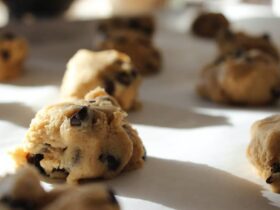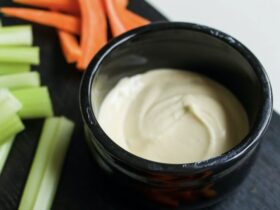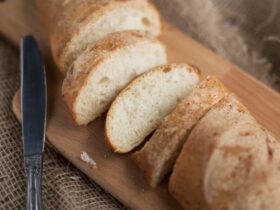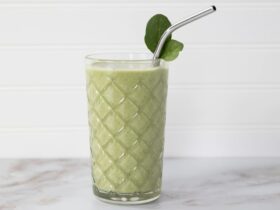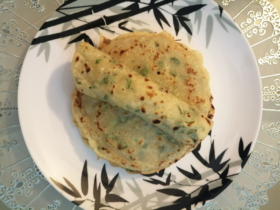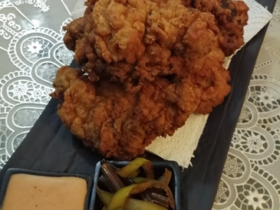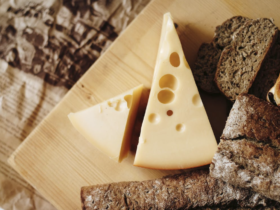Handling sticky dough can be a frustrating experience for many home bakers. Whether you are making bread rolls, bread, pasta, or even dumplings, the stickiness of the dough can make it difficult to work with and shape into the desired form.
This can be especially frustrating if you are trying to roll out the dough or shape it into a particular shape. However, with a few simple techniques, you can easily handle the trouble and achieve the perfect result.
The most effective way to handle sticky dough is to flour your work surface and your hands before you begin shaping the dough. However, other techniques like using a dough scraper, wetting your hands, adding more flour, and letting the dough rest for a while can be used to reduce the stickiness of the dough.
Just be sure to use a light dusting of flour, as too much can make the dough too dry and affect the final texture of the baked product. Additionally, it is important to use a clean and dry surface when working with dough, as any moisture or stickiness on the surface can cause the dough to stick.
Overcoming the Obstacles of Sticky Dough

Overcoming the obstacles of sticky dough can be a frustrating experience for many home bakers. The stickiness of the dough can make it difficult to work with and shape into the desired form, and it can be especially frustrating if you are trying to roll out the dough or shape it into a particular shape. By flouring your work surface and hands, using a rolling pin or dough scraper, or wetting your hands you can easily work with even the stickiest of doughs.
The Causes of Sticky Dough and How to Prevent it
The causes of sticky dough can vary, but some of the most common factors include using too much liquid or not enough flour, using low-quality flour, or simply not kneading the dough long enough.
One of the most key factors in preventing sticky dough is to ensure that the dough is properly kneaded. Kneading the dough helps to develop the gluten in the flour, which gives the dough structure and strength. When the dough is properly kneaded, it will become smooth and elastic, and it will easily separate from your hands while kneading.
The Importance of Flouring your Surface and Hands

This is an important technique for preventing the dough from sticking and making it easier to work with. Here are a few reasons for its importance:
Prevents sticking: Flouring your surface and hands creates a barrier between the dough and your hands or the surface, which helps to prevent the dough from sticking and it can help to avoid frustrating moments where the dough becomes difficult to handle.
Keeps the dough from becoming too dry: By using a light touch when flouring your surface and hands, you can help to prevent the dough from becoming too dry. Too much flour can make the dough too dry and affect the final texture of the baked product, so it is important to use just enough flour to prevent the dough from sticking.
Role of humidity and temperature in the stickiness of dough
The humidity and temperature of your kitchen can also play a role in the stickiness of dough. If the air is very humid, the dough may absorb excess moisture and become stickier than usual. On the other hand, if the air is very dry, the dough may become dry and crumbly.
To help prevent the dough from becoming too sticky in humid conditions, you can try using a little less liquid in the recipe, or you can add a little more flour to absorb the excess moisture. You may also find it helpful to cover the dough with a towel or plastic wrap while it rises to prevent it from absorbing excess moisture from the air.
Alternatively, to prevent the dough from becoming too dry in dry conditions, you can try using a little more liquid in the recipe, or you can add a little fat to help moisten the dough. You may also find it helpful to store the dough in an airtight container to keep it from drying out.
Using a rolling pin or dough scraper to shape sticky dough

Using a rolling pin or dough scraper can be a helpful technique for shaping sticky dough, as it allows you to easily roll out and shape the dough without it sticking to your hands or the surface.
Flour the surface and the rolling pin: Before you begin rolling out the dough, be sure to flour your work surface and the rolling pin. This will help to prevent the dough from sticking, making it much easier to shape the dough.
Roll out the dough: Place the dough on the floured surface and begin to roll it out with the rolling pin. Use a gentle, back-and-forth motion to evenly roll out the dough, applying consistent pressure as you go. If the dough begins to stick to the rolling pin or the surface, simply add a little more flour.
Use a dough scraper: A dough scraper, also known as a bench scraper, is a handy tool that can be used to lift and turn the dough as needed. Simply use the scraper to lift and turn the dough, adding more flour if needed.
Wetting your hands to prevent the dough from sticking
Wetting your hands slightly before handling sticky dough can be an effective technique for preventing the dough from sticking to your hands. Here are a few tips:
Use cold water: To wet your hands, simply run them under chilly water and then shake off any excess water. The cold water will help to prevent the dough from sticking to your hands, making it much easier to shape and work with.
Use a light touch: When handling the dough, be sure to use a light touch and avoid applying too much pressure. This can help to prevent the dough from becoming too wet and sticky, and it can help to avoid overworking the dough and affecting the final texture of the baked product.
Tips for Shaping and Working with Sticky Dough

By following these tips and using the appropriate techniques for your specific baked good, you can easily work with sticky dough and achieve perfect results every time.
Bread: When working with sticky dough for bread, to shape the dough, gently stretch and fold it over itself until it becomes smooth and elastic. Then, place the dough in a greased or oiled bowl, cover it with a towel or plastic wrap, and allow it to rise until doubled in size.
Bread rolls: To shape the rolls, place a portion of dough on the floured surface and use a rolling pin to gently roll it out into a circle.
Dumplings: When working with sticky dough for dumplings, use a small amount of flour to dust your hands and then pinch off small pieces of dough, rolling them between your palms to form balls. Place the balls on a floured surface or tray and then proceed with the recipe as directed.
Common Mistakes to Avoid when Working with Sticky Dough
Adding too much flour: It is important to use just enough flour to prevent the dough from sticking, as too much can make the dough too dry and affect the final texture of the baked product.
Overworking the dough: Sticky dough can be delicate and easily overworked, which can lead to a tough and chewy texture. To prevent this, be sure to handle the dough gently and use a light touch to avoid overworking it.
Using the wrong type of flour: Several types of flour have different protein levels, which can affect the texture of the dough. Be sure to use the correct type of flour for your recipe and consider using a kitchen scale to ensure accurate measurements.
Final Words
Thank you for reading! We hope that these tips and techniques for working with sticky dough have been helpful and that you feel more confident tackling your next baking project. Remember to always follow your recipe closely and measure ingredients carefully, and do not be afraid to add a little extra flour if the dough is too sticky.
With practice, you will become a pro at handling sticky dough and achieving perfect results every time.
As always, thanks for reading and be sure to keep your kitchen Hot and Salty! Happy baking!

